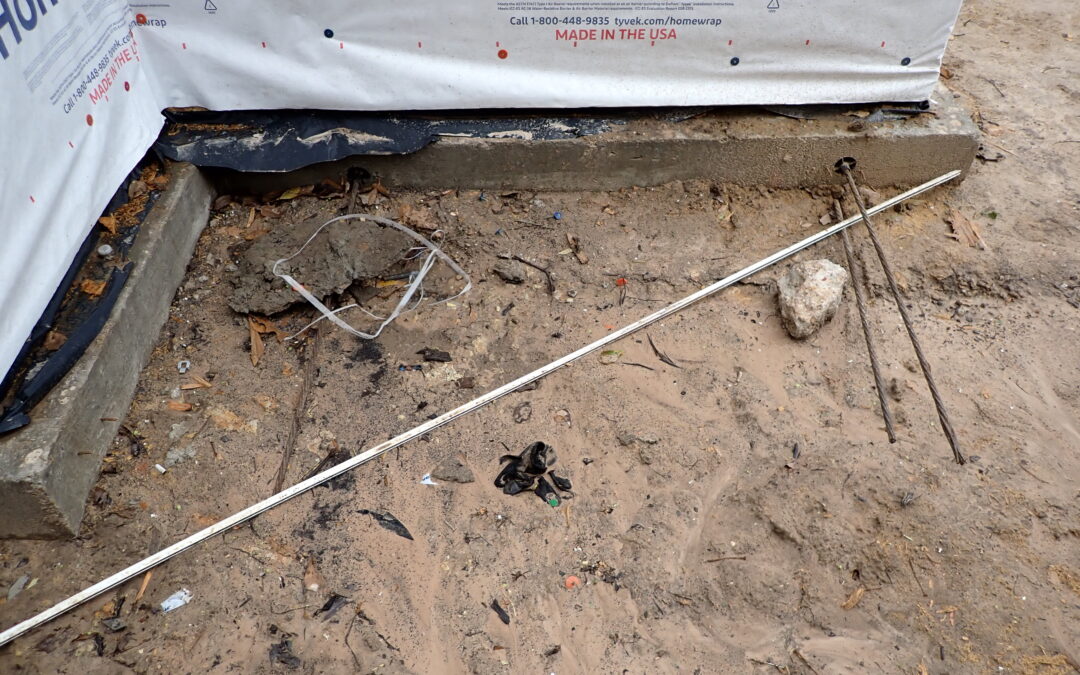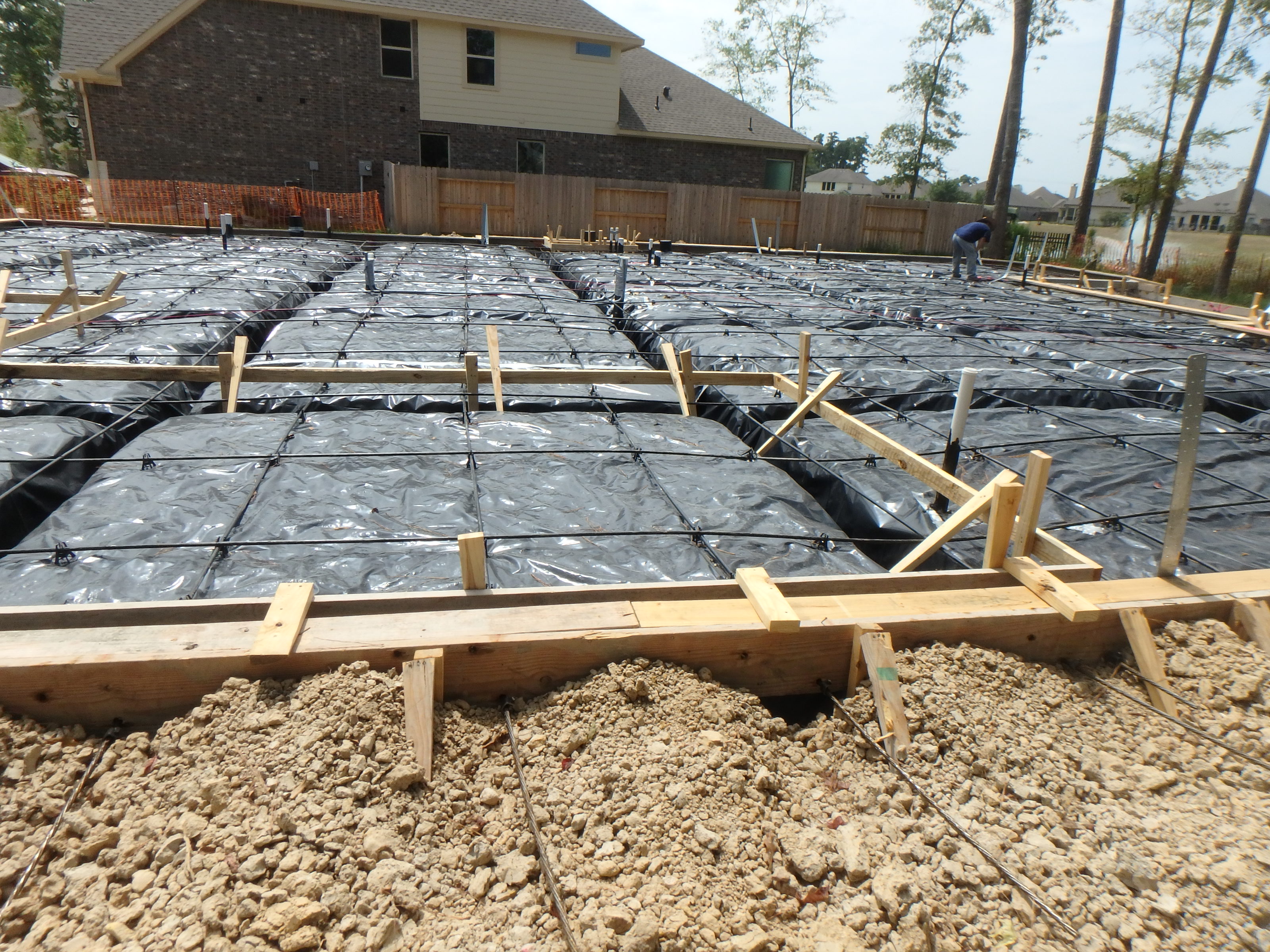Most of the home foundation construction in the Houston area today is post tensioned slab on grade foundations. This type of foundation is not reinforced with conventional reinforcing steel bar but is reinforced using tendons that compress the concrete in two directions to resist cracking.
In our area hairline cracking of foundation concrete for a post tensioned concrete slab on grade foundation during curing (hardening) of the concrete is common. During construction of the foundation, after placement of wet concrete, the concrete heats up and expands then after the chemical reaction of curing the of the concrete it cools and shrinks. The cables of the reinforcing tendons cannot be stressed before the concrete cures sufficiently to have some strength, and this leaves the concrete with no reinforcement during the curing stage, creating a good potential for curing cracks to form as the concrete shrinks as it cools. Cracks will most commonly occur perpendicular to the direction of the greatest dimension of the foundation where the greatest dimensional changes occur with changes in temperature. If the foundation is relatively long and narrow, then cracks most commonly occur across the narrow dimensions. They also commonly occur at inside corners or other significant changes in dimension.
In a post tensioned concrete slab on grade foundation, hairline cracks are annoying occurrence but typically do not materially affect the performance of the foundation over its life and are a cosmetic defect. They may draw closed during tensioning of the tendon cables, unless dirt has fallen into the cracks during curing. Contamination into the cracks most commonly occurs if construction is allowed prior to tensioning. There is plenty of opportunity for this to occur since curing sufficient to allow tensioning often takes 7-10 days in our area.
Production builders have started to build on foundations in the Houston area as soon as they can be walked on without damage to the surface finish. Loading of the concrete before tensioning increases the potential for cracking. If cracks open in the foundation during this time, it is likely dirt will be forced into the cracks and they will never close with tensioning.
It is recommended that no construction or other significant loading be applied to the foundation during curing and before tensioning of the foundation reinforcement tendon cables. This is especially true if the foundation surfaces are to be a finished surface. Since tensioning normally occurs after the foundation concrete has reached 75% of the 28-day design strength this normally occurs at 7-10 days. This will reduce the potential for damage to the foundation during the un-reinforced period and will create a better potential for any hairline cracks that occur during curing to remain clean and close as a result of compression during tensioning.



Recent Comments